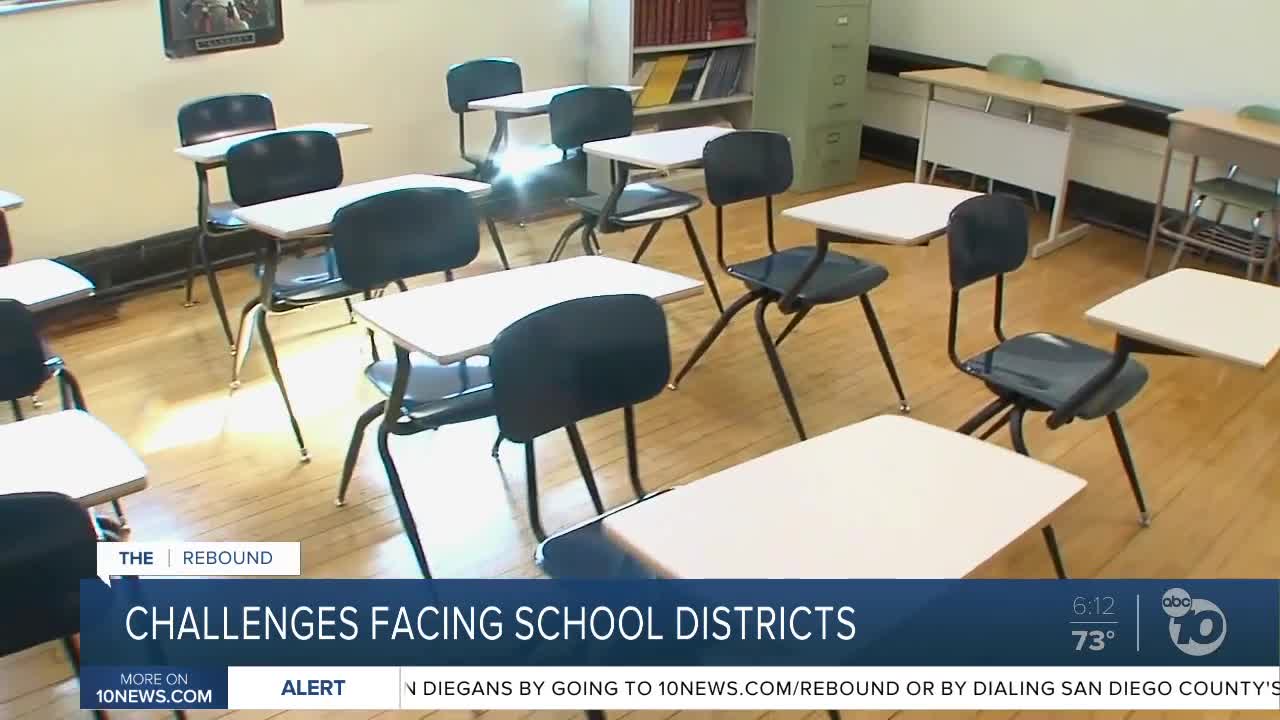SAN DIEGO (KGTV) -- The COVID-19 pandemic has brought uncertainty to school districts across the state. With health conditions changing daily, so does the look of your child's education in the fall.
This week an announcement of 100% distance learning from the state's two largest school districts sent some parents into an immediate panic.
"I was very taken aback," said San Diego mom Leona Smith.
How long will classes be virtual? At this point, there's not a clear-cut answer. Parents are left with a lot of questions about how virtual and hybrid programs will impact their kids' education and their family.
"What are the resources going to be? How is it going to be laid out? What is the time spent? Is it going to be more structured through the distance learning than I felt it had been?" Smith said.
Los Angeles Unified and San Diego Unified school districts made their course public, while other districts are still determining what the first day of school will look like, and some already have students back on campus.
Statewide, there is no one-size-fits-all answer, but there are requirements districts need to follow.
"Most parents don't know there is a minutes requirement for each day," said Kevin Gordon with Capitol Advisors Group. "There's actually an annual minutes requirement that we have to hit for kids, and then there's actually a minimum number of days per year that we have to hit – 180 days, generally, and 180 minutes, generally."
Gordon said a school day requires a minimum of 180 minutes or three hours of education at lower grade levels and 240 minutes or four hours for high school students.
Gordon said those are minimum time standards and most districts exceed that.
Reporter Adam Racusin asked him about class sizes.
"While they are lower than they used to be, they aren't the 20 to 1 that we would like them to be. And in all the upper grades they are absolutely exceeding 30 to 1 in most California classrooms," Gordon said.
Imagine the challenge for districts that are bringing students back onto campus while following social distancing guidelines.
"It's not about cutting class sizes in half, it's like cutting class sizes into thirds," Gordon said.
Another area of concern surrounds students who may need more support and instruction than they can get through typical distance learning.
In California, once a child is found eligible for special education, the family will participate in the process by attending an individualized education program or IEP. It's both a process and a written document.
"It becomes almost like a contract and it says here's what the school district is going to do for the student" said special education attorney Timothy Adams.
"Parents really need the school district to help them, especially in circumstances where the student has really complex needs and requires a variety of in-person, therapeutic services that are delivered usually through their IEP. We need the school districts to implement those services," he explained.
Many parents will have to wait for answers, while districts work to make plans flexible enough to adapt to changing community conditions.
We reached out to the California Department of Education about guidance for districts regarding hours of learning a day, class sizes, and special education and did not hear back.




